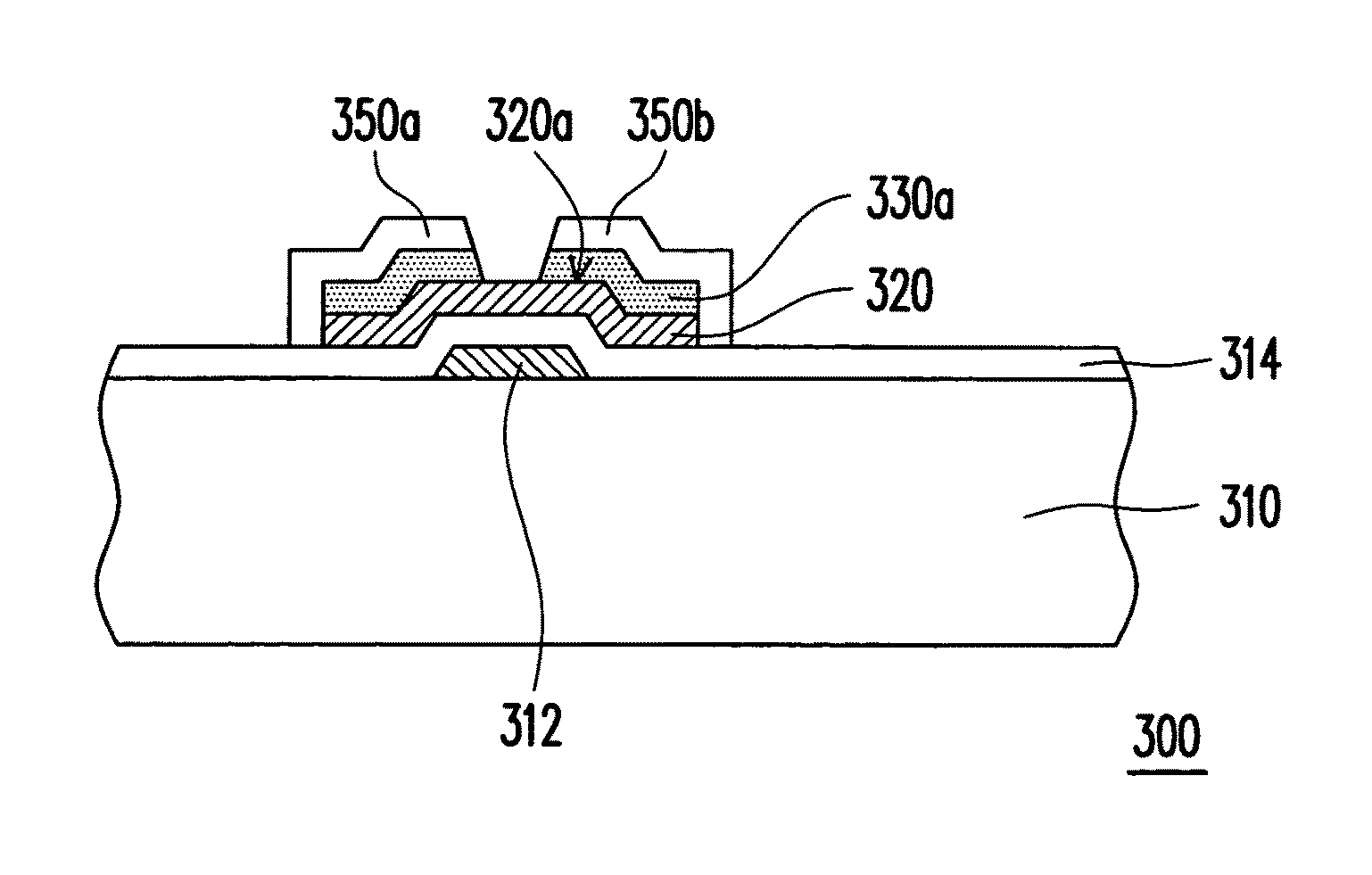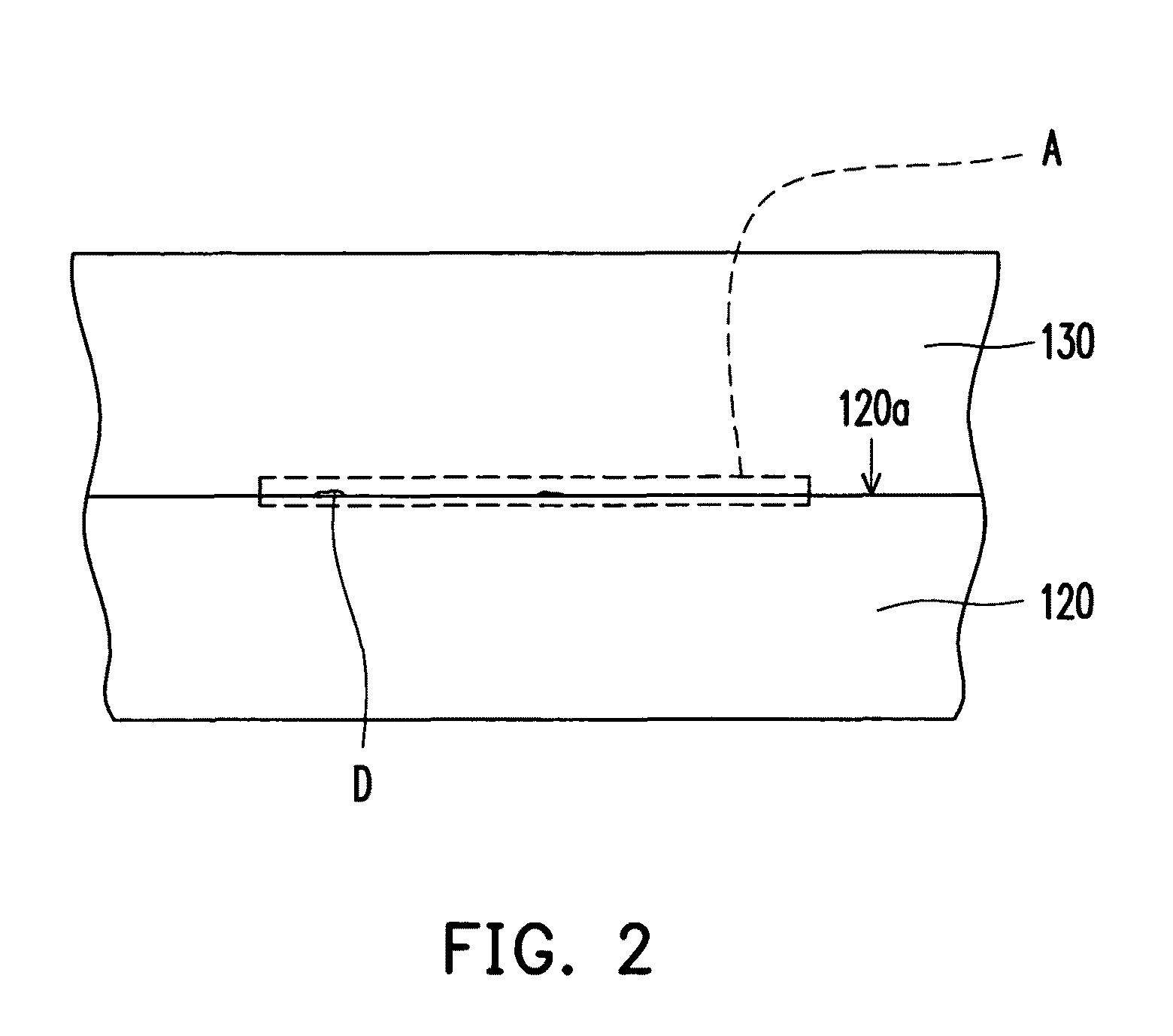Semiconductor stacking layer and fabricating method thereof
a technology of semiconductor devices and stacking layers, which is applied in the direction of semiconductor devices, electrical equipment, basic electric elements, etc., can solve the problems of adversely affecting the characteristics of semiconductor devices, defects on the interface between c-si and other thin films, etc., and achieve the effect of reducing the defects between the a-si layer and the doped c-si layer
- Summary
- Abstract
- Description
- Claims
- Application Information
AI Technical Summary
Benefits of technology
Problems solved by technology
Method used
Image
Examples
first embodiment
[0027]FIGS. 1A to 1C are schematic cross-sectional views illustrating a fabricating method of a semiconductor stacking layer according to an embodiment of the present invention. Referring to FIG. 1A, first, an a-Si layer 120 is formed on a substrate 110. Next, referring to FIG. 1B, after formation of the a-Si layer 120, surface treatment T is performed on a surface 120a of the a-Si layer 120. Thereby, silicon atoms on the surface 120a of the a-Si layer 120 can be orderly arranged. Namely, after the surface treatment T is performed, the treated surface 120a of the a-Si layer 120 is conducive to subsequent formation of a doped μc-Si layer 130.
[0028]In the present embodiment, the surface treatment T refers to pretreatment performed on the surface 120a of the a-Si layer 120 with use of hydrogen (H2) plasma. Specifically, the H2 plasma improves structural compactness of the surface 120a of the a-Si layer 120 so as to enhance bonding strength between the a-Si layer 120 and the doped μc-Si...
second embodiment
[0032]FIGS. 3A to 3D are schematic cross-sectional views illustrating a fabricating method of a TFT according to an embodiment of the present invention. Referring to FIG. 3A, in the present embodiment, a gate 312 and a gate insulation layer 314 are formed on the substrate 310. In particular, the gate 312 is formed by first forming a gate material layer (not shown) on the substrate 310. Next, the gate material layer is patterned to form the gate 312. Thereafter, the gate insulation layer 314 is formed on the gate 312 and the substrate 310. Finally, an a-Si layer 320 is formed on the gate insulation layer 314, as indicated in FIG. 3A.
[0033]Referring to FIG. 3B, after formation of the a-Si layer 320, surface treatment T is performed on a surface 320a of the a-Si layer 320. Thereby, silicon atoms on the surface 320a of the a-Si layer 320 can be orderly arranged. Namely, after the surface treatment T is performed, the treated surface 320a of the a-Si layer 320 is conducive to subsequent ...
PUM
| Property | Measurement | Unit |
|---|---|---|
| thickness | aaaaa | aaaaa |
| width | aaaaa | aaaaa |
| thickness | aaaaa | aaaaa |
Abstract
Description
Claims
Application Information
 Login to View More
Login to View More - R&D
- Intellectual Property
- Life Sciences
- Materials
- Tech Scout
- Unparalleled Data Quality
- Higher Quality Content
- 60% Fewer Hallucinations
Browse by: Latest US Patents, China's latest patents, Technical Efficacy Thesaurus, Application Domain, Technology Topic, Popular Technical Reports.
© 2025 PatSnap. All rights reserved.Legal|Privacy policy|Modern Slavery Act Transparency Statement|Sitemap|About US| Contact US: help@patsnap.com



